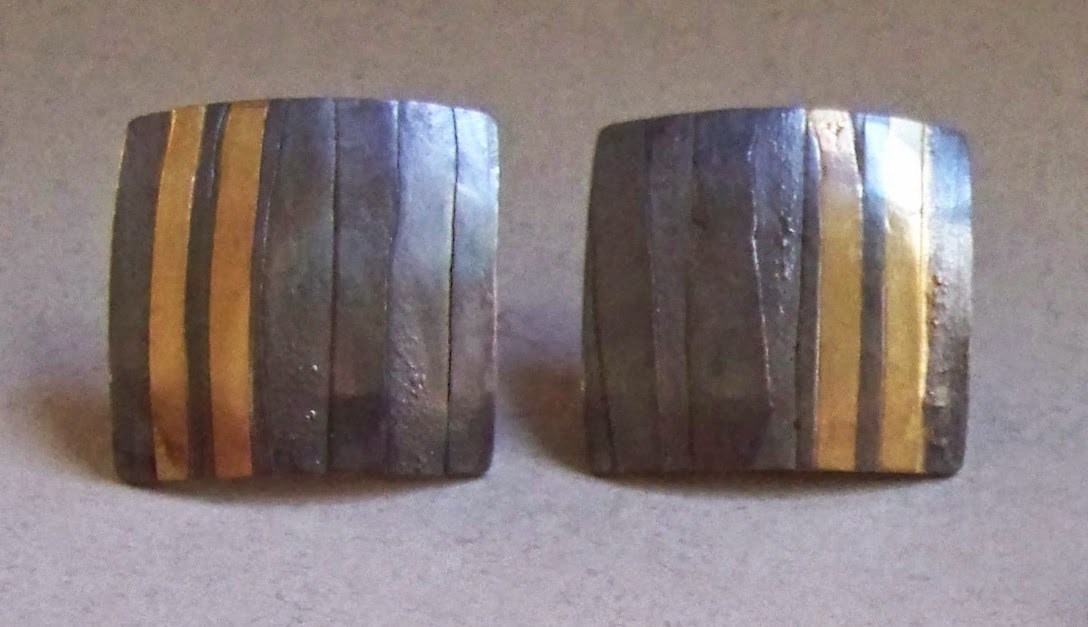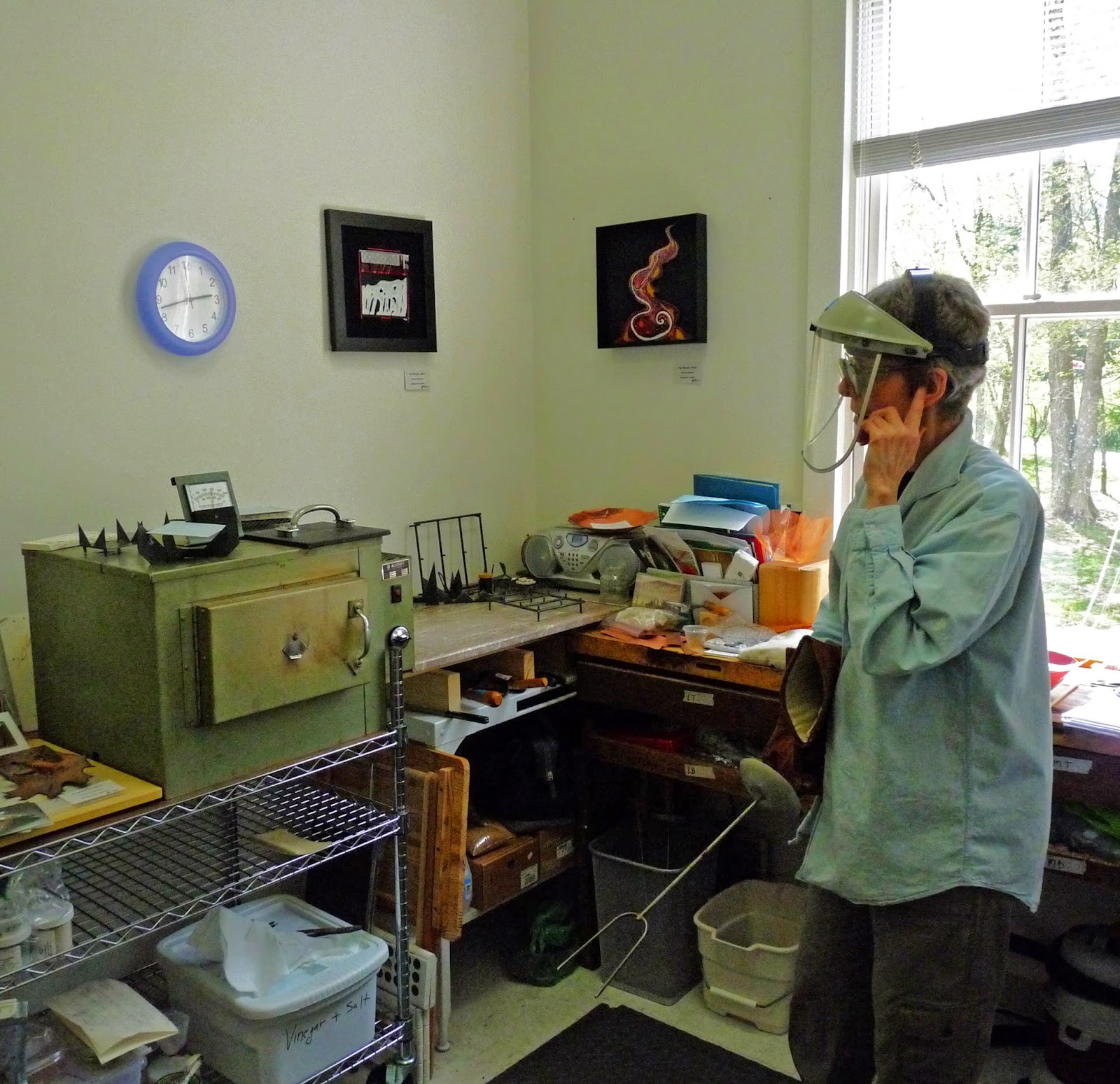"Art completes what nature cannot bring to a finish." ~Aristotle
Carol Oshinsky spends much of the year in Massachusetts, providing her with the inspiration that drives the work she creates in her basement studio upon her return.
“Texture and the shapes created by edges that don’t quite meet fascinate me. Most of my work reflects this interest. My textures are created by hammering metal into rocks or pitted chunks of iron, through fusion of bits and pieces of silver and gold, by surface embellishment using hammers, gravers and burs.
 |
| Berkshires in the Fall |
1. When did you join Pleiades?
Can't remember how long I've been with Pleiades. I met the members through Washington Guild of Goldsmiths. I was asked a number of times to be a guest artist - had lots of fun and sold some things. Sometime after 2000 I was asked to become a permanent member, and I accepted.
2. What led you to designing and creating jewelry?
How did I get started making jewelry? In the 70's Treasure of the Pirates (long gone) offered silversmithing classes. I wanted to learn how to repair some of the broken silver pieces I had. Once I learned to solder, I was hooked. The variety of techniques to learn and things to make were endless. WGG offered workshops with wonderful teachers and I took as many as I could.
3. Describe your creative process.
 |
| Landscape 1 |
4. Where do you get your inspiration?
My inspiration comes from rural New England, nature, fine art - I make pins of abstract landscapes, insect pins, and I have made earrings that were inspired by Rothko paintings.
5. Tell me about the technical process you employ in your work.
I hammer into rusty steel to create textures and I fuse copper, steel, and gold - fuse bits and pieces, roll out, fuse more, roll out, fuse more until I like the texture I have. Patinas & polished high points accentuate the textures.
6. How would you describe your artistic style and how has it changed over the years?
My artistic style? - I don't have a name for it. I play and lose myself in the process. Sometimes I make a piece that is worth saving, sometimes it is a failure and ends up fused in pieces into something else. Fortunately my livelihood does not depend on what I create. I don't have to think about the saleability, marketability, or profit margin of what I make. That's a huge plus. I am lucky to have Pleiades because the sales I make allow me to thin my inventory and give me the push to make more.
7. Any big plans?
 |
| Urban Renewal |
8. If someone wants to purchase a piece from you (away from the show) what is the best way for them to contact you?
The best way to buy a piece of mine is to come to the Pleiades show. Goldsborough Glynn Antiques on Howard Ave. in Kensington sells some of my pieces, too.












